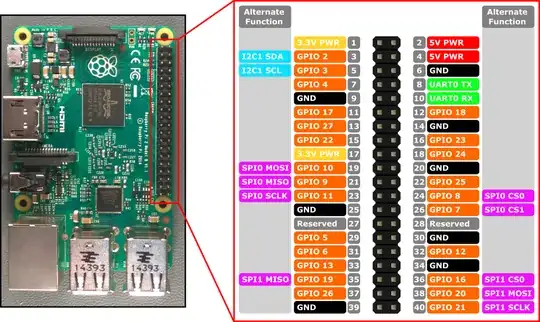I have a Raspberry Pi 3, and I would like to use it to communicate with an SPI device.
The pins from the SPI device have been connected to the appropriate headers on the board. Windows 10 IoT interacts with my device OK, using Windows.Devices.Spi classes from .NET.
Now I want to do same in Linux.
I am getting a “Message too long” error, from both cat /dev/spidev0.0 & and my own C++ code that uses open & ioctl calls to interact with that device (however in my application, it's interesting that open & port setup complete without errors).
Config.txt:
disable_overscan=1
hdmi_force_hotplug=1
hdmi_group=2
hdmi_mode=82
dtparam=spi=on
dtparam=audio=on
gpu_mem=128
dtoverlay=spi-bcm2835
uname -r: 4.9.41-v7+
lsb_release -a: Raspbian GNU/Linux 9.1 (stretch)
My device is connected to pins 19, 21, 23, 24, 25:
Does Linux use the same pins for SPI as Windows 10 IoT?
